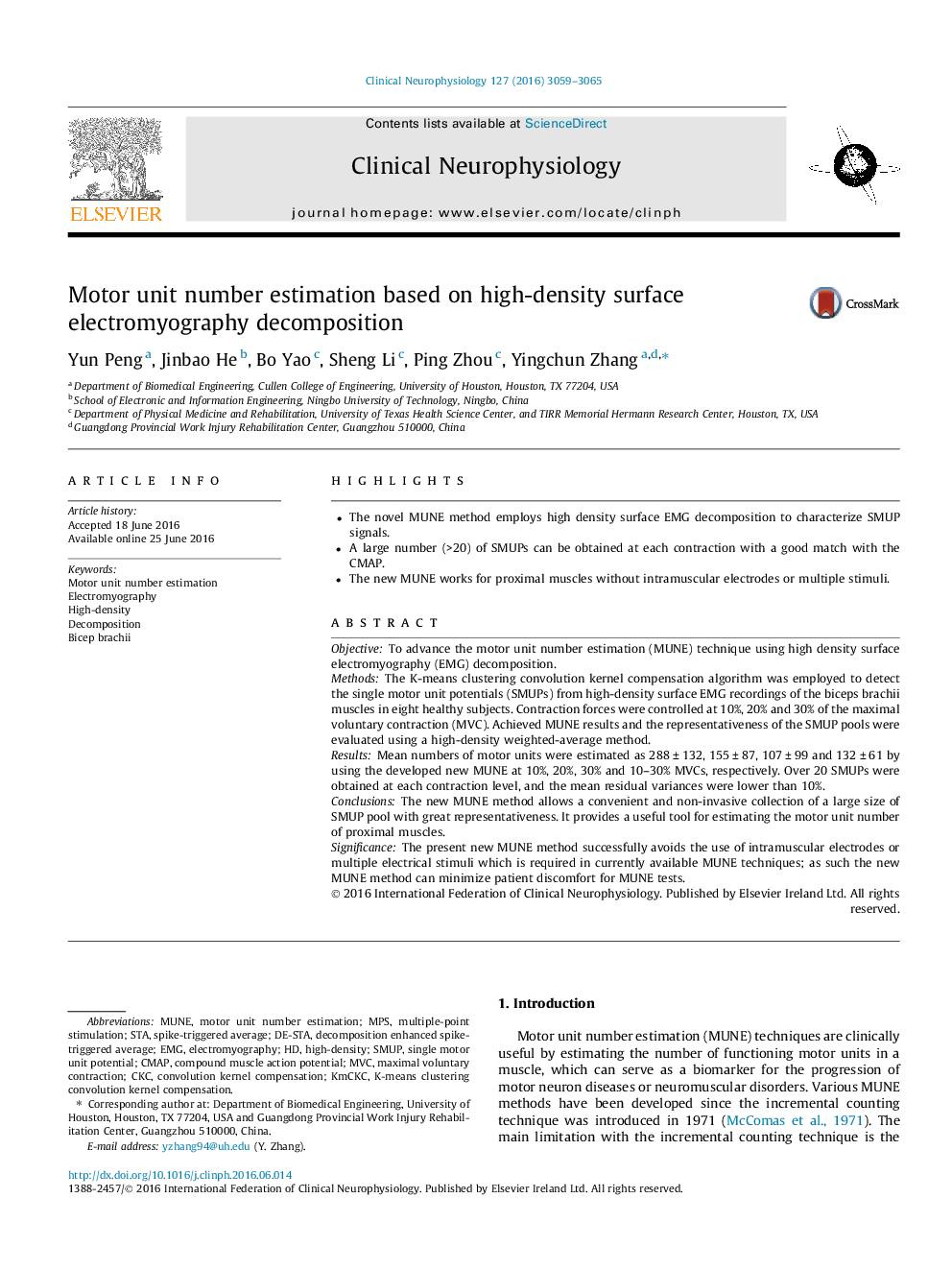| Article ID | Journal | Published Year | Pages | File Type |
|---|---|---|---|---|
| 6007291 | Clinical Neurophysiology | 2016 | 7 Pages |
â¢The novel MUNE method employs high density surface EMG decomposition to characterize SMUP signals.â¢A large number (>20) of SMUPs can be obtained at each contraction with a good match with the CMAP.â¢The new MUNE works for proximal muscles without intramuscular electrodes or multiple stimuli.
ObjectiveTo advance the motor unit number estimation (MUNE) technique using high density surface electromyography (EMG) decomposition.MethodsThe K-means clustering convolution kernel compensation algorithm was employed to detect the single motor unit potentials (SMUPs) from high-density surface EMG recordings of the biceps brachii muscles in eight healthy subjects. Contraction forces were controlled at 10%, 20% and 30% of the maximal voluntary contraction (MVC). Achieved MUNE results and the representativeness of the SMUP pools were evaluated using a high-density weighted-average method.ResultsMean numbers of motor units were estimated as 288 ± 132, 155 ± 87, 107 ± 99 and 132 ± 61 by using the developed new MUNE at 10%, 20%, 30% and 10-30% MVCs, respectively. Over 20 SMUPs were obtained at each contraction level, and the mean residual variances were lower than 10%.ConclusionsThe new MUNE method allows a convenient and non-invasive collection of a large size of SMUP pool with great representativeness. It provides a useful tool for estimating the motor unit number of proximal muscles.SignificanceThe present new MUNE method successfully avoids the use of intramuscular electrodes or multiple electrical stimuli which is required in currently available MUNE techniques; as such the new MUNE method can minimize patient discomfort for MUNE tests.
